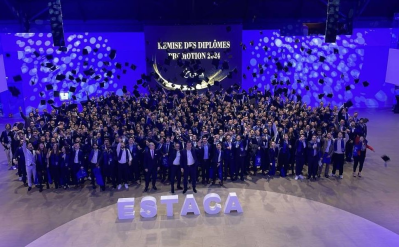News

Cleaning the air in future metro trains: a challenge for our researchers
ESTACA's teacher-researchers are carrying out an experimental study for Alstom, on a full-scale model of a metro train, installed on the aeraulic and climatic test bench at the Centre d'Essais Ferroviaire (CEF) in Valenciennes. The aim is to characterize air quality and determine the efficiency of air filtration and purification systems inside a car.
Air quality in underground railway enclosures (EFS) has been a matter of concern for several years. Studies measuring air quality in EFSs have revealed high levels of suspended particulates, with concentrations of fine particles higher than those observed in outside air. These particles infiltrate the trains through ventilation systems and various openings, with health consequences for users.
Alstom wants to understand the dynamics of particles in cars, and evaluate devices for cleaning the air inside its new trains. The company has entrusted the technical study to ESTACA: design of the pollution generation device, measurements, analysis of results and recommendations.
Evaluating in-car air filtration systems
Alstom has produced a full-scale model of a rail car with an air conditioning system designed in-house and made available to the Valenciennes CEF.
Researchers in the air quality department have developed innovative solutions for generating a controlled polluted atmosphere and for taking stable, reproducible measurements throughout the cabin volume. The aim is to characterize particle dynamics throughout the car and evaluate various air purification solutions, and implement them in the train-scale model.
They have designed a complete system comprising a mini-chamber and a network of sensors that measure concentrations of fine and ultrafine particles.
Then they reproduced a concentration level of particulate pollutants representative of the railway enclosure environment using a synthetic particle generator.
A series of measurements with purification and/or filtration systems installed in the HVAC (Heating, Ventilation, and Air Conditioning) system were designed to assess filtration efficiency.
Positive initial results could lead to further studies
The results of the study carried out by ESTACA researchers have validated the design of the polluted atmosphere creation device, assessed filtration efficiencies and visualized particle distribution. These results will enable Alstom's teams to continue developing the air purification devices and adjust their modeling.
 1
1















No comment
Log in to post comment. Log in.